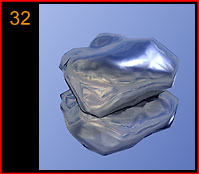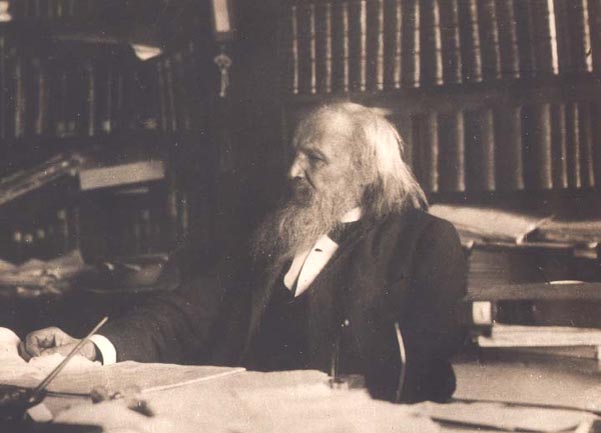|
|
|
|
|
... ... ... ... ... ... |
THE BASICS:
HISTORY: In his report on "The Periodic Law of the Chemical Elements", Mendeleev predicted the existence of several unknown elements. Among them was one which was supposed to be just bellow silicon and, for that reason, he called it eka-silicon. Mendeleev studied several minerals, although unsuccessfully, seeking for that new element 32. In the summer of 1885, a new mineral, argyroditeit, was found in the Himmelsfurst mine (Freiberg, Germany). The exact composition of this ore was unknown, so C. Winkler, a Freiberg's chemist, proposed its study. He found silver, sulfur, iron oxide, zinc and an element unknown till that time (eka-silicon). In February of 1886, Winkler was sure of the discovery of this new element that he named germanium in honor of his fatherland. SOURCE: Germanium is found in small quantities in
the minerals, germanite and argyrodite. It is also present in zinc ores. Commercial production of germanium is by processing zinc smelter flue
dust. It can also be recovered from the by-products of coal combustion,
ensuring a copious future supply. OCCURRENCE: Germanium is not very abundant, so that we can even say that it is a rare element. Its principal compounds are argyridite (4Ag2S.GeS2), germanite (7CuS.FeS.GeS2), canfieldite (4Ag2S.(Sn.Ge)S2) and renierite ((Cu, Ge, Fe, Zn, As)S). Of these, only the germanite deposits in Tsumeb (Southwest Africa) and renierite deposits in Katanga (Congo) are of major industrial significance. Trace amounts of germanium (up to 0.3%) are reported in many sulfide and oxide minerals and coal. USES: Germanium is extensively used in electronics. Added to beryllium, it leads to increasing ductility, and added to copper, it improves chemical resistivity. It is also used in several brazing alloys. Germanium is an important part of industrial glasses because of its infrared transmission and high refractive index. Germanium has played the most important role in the development of solid state electronics beginning with the discovery of the transistor in 1948. It is one of the most studied and best understood of all elements. The discovery of the transistor action pointed the way to numerous solid state electronics phenomena, forming the basis of a new science and technology of solid state electronics. Cyclotron resonance, a means for determining the effective mass of charge carriers, was first observed in germanium single crystals. A variety of optical and magneto-optical measurements allowed for determining of fundamental parameters necessary for understanding the band structure of solids. BIOLOGICAL ROLE: Germanium has no known biological role. It is non-toxic. Certain germanium compounds have low mammalian toxicity but marked activity against some bacteria, which has stimulated interest in their use in pharmaceutical products.
|




